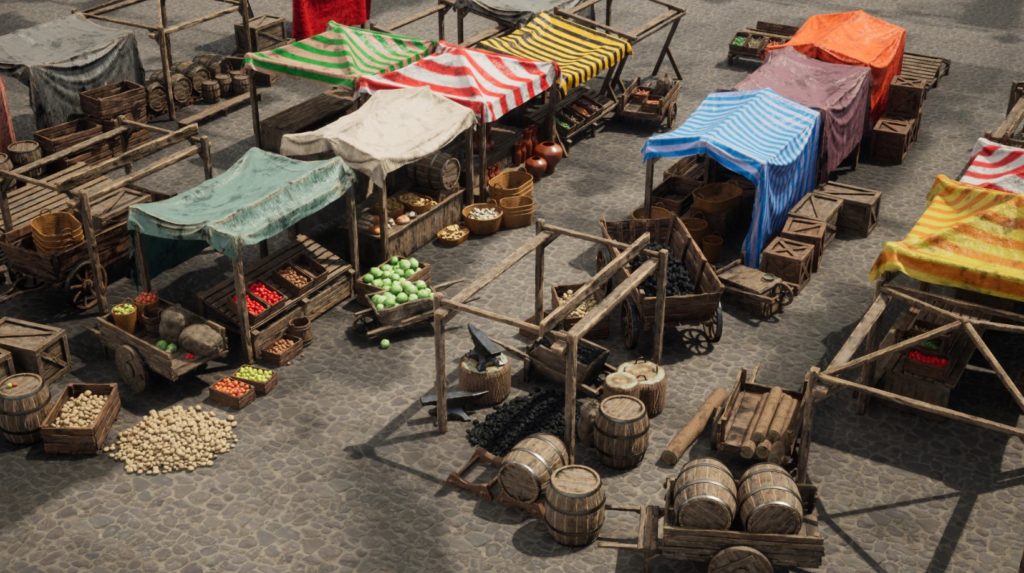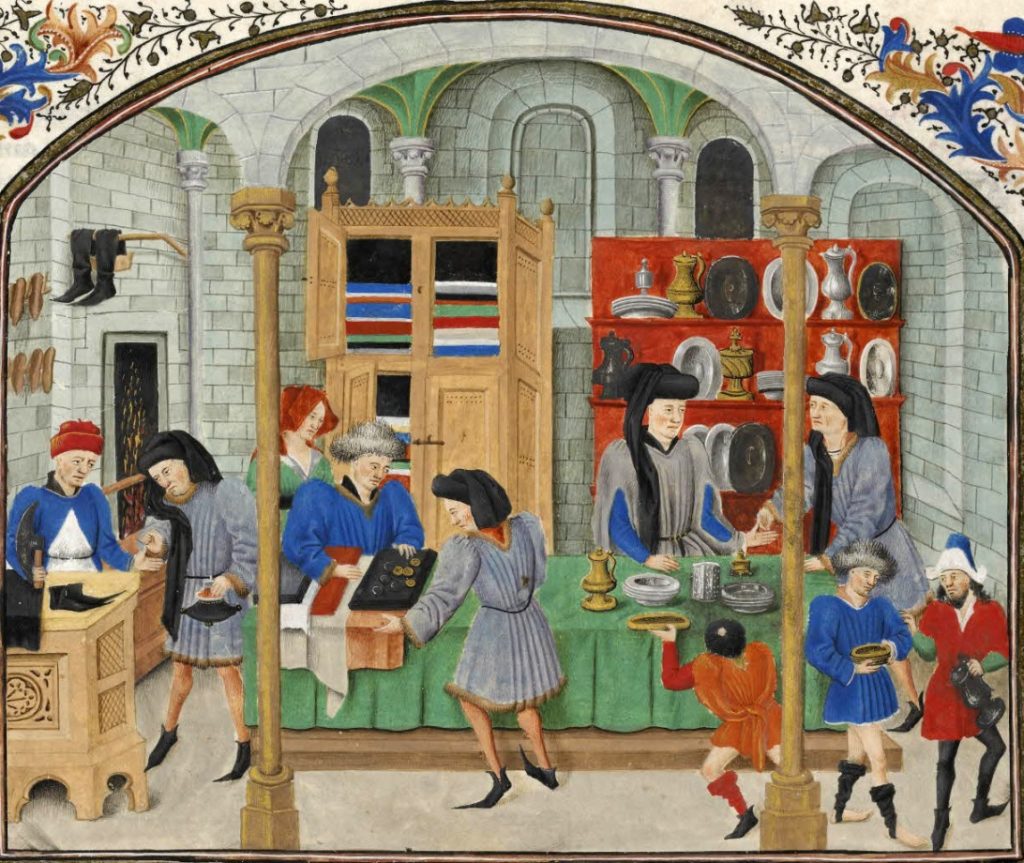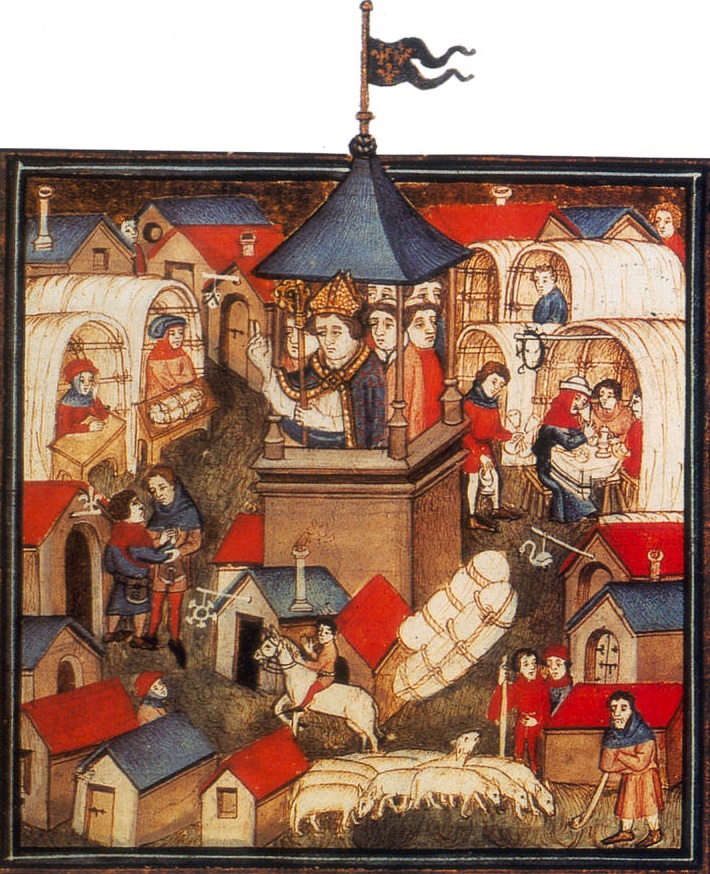Merchants in the middle ages were those who traded goods and services across long distances, often traveling to different countries or regions to buy and sell their wares.
They played a very important role in the overall economy of medieval societies, serving as intermediaries between producers and consumers, and helping to facilitate trade and commerce.

Types of Merchants
There were different types of merchants in the middle ages, including:
- Wholesale merchants: These merchants purchased large quantities of goods from producers and then resold them in smaller quantities to other merchants or retailers.
- Retail merchants: These merchants purchased goods from wholesalers and sold them to individual consumers. They could operate out of a shop or market stall, or travel from town to town selling their goods.
- Import merchants: These merchants specialized in bringing goods from other countries or regions into their own. They often had to navigate complex trade networks and deal with tariffs and other trade barriers.
- Export merchants: These merchants specialized in exporting goods from their own country or region to other countries or regions.
- Specialized merchants: Some merchants specialized in particular types of goods, such as cloth, spices, or metals.
Related article: How did medieval merchants travel?
Who Could Become a Merchant in Medieval Times?
In medieval times, the ability to become a merchant was often determined by social class and wealth. Many merchants came from wealthy families and used their resources to fund their trade endeavors. Others came from more humble backgrounds and worked their way up through the ranks by starting small and gradually building their businesses.

However, becoming a merchant was not always easy, as it required a significant investment of time, money, and resources. Merchants had to be able to finance their trade ventures, which often involved the purchase of goods and transportation costs. They also had to be able to navigate complex trade networks and deal with the various challenges and risks that came with trade, such as theft, fraud, and natural disasters.
Roles and Responsibilities in Society
Merchants played a vital role in the economies of medieval societies. They were responsible for facilitating trade and commerce by bringing goods and services from one place to another, and connecting producers with consumers. They helped to create a market for goods and services, which allowed producers to sell their wares and consumers to access a wide range of products.
In addition to their economic roles, merchants also played important social and cultural roles in medieval society. They often served as intermediaries between different cultures and societies, and helped to spread ideas, customs, and technologies across long distances. They also played a role in the spread of religion, as many merchants were involved in the trade of religious texts and artifacts.
Which Class Did Merchants Belong To?
In many medieval societies, merchants were considered to be part of the middle class, somewhere between the nobles and the peasants. They were often wealthier and more influential than peasants, but not as wealthy or powerful as nobles. However, their social status was often dependent on the success of their businesses, and some merchants were able to amass great wealth and influence.

Despite their middle class status, merchants were often looked down upon by the nobility and were considered to be less honorable than knights or nobles. This was partly due to the fact that merchants were seen as being motivated by profit, while knights and nobles were supposed to be motivated by honor and duty.
However, this view of merchants began to shift over time, as trade and commerce became increasingly important to the economies of medieval societies.
Frequently asked questions
Here are the answers to some of the most frequently asked questions about medieval merchants:
Q: What types of goods did merchants trade?
A: Merchants in the middle ages traded a wide range of goods, including cloth, spices, metals, jewelry, and food. They also traded in luxury goods such as furs, silk, and precious stones.
Q: How did merchants transport their goods?
A: There were several ways that merchants transported their goods in the middle ages, including by land (using carts or pack animals), by sea (using ships), and by river (using boats). The method of transportation often depended on the type of goods being transported and the distance they needed to travel.
Q: How did merchants finance their trade ventures?
A: Merchants in the middle ages often had to finance their trade ventures themselves, either through their own personal wealth or by borrowing from others. They might also seek funding from merchant guilds, which were associations of merchants that provided support and resources to members.
Q: How did merchants protect themselves against risks and challenges?
A: Merchants in the middle ages faced many risks and challenges, including theft, fraud, and natural disasters. To protect themselves, they might form partnerships with other merchants, join merchant guilds, or purchase insurance. They also had to be knowledgeable about the laws and regulations governing trade in the places where they operated.
Q: How did merchants contribute to the spread of religion and culture in the middle ages?
A: Merchants played a significant role in the spread of religion and culture in the middle ages by trading in religious texts and artifacts, as well as introducing new ideas and customs to the places they visited. They often served as intermediaries between different cultures and societies, and helped to spread knowledge and understanding across long distances.
